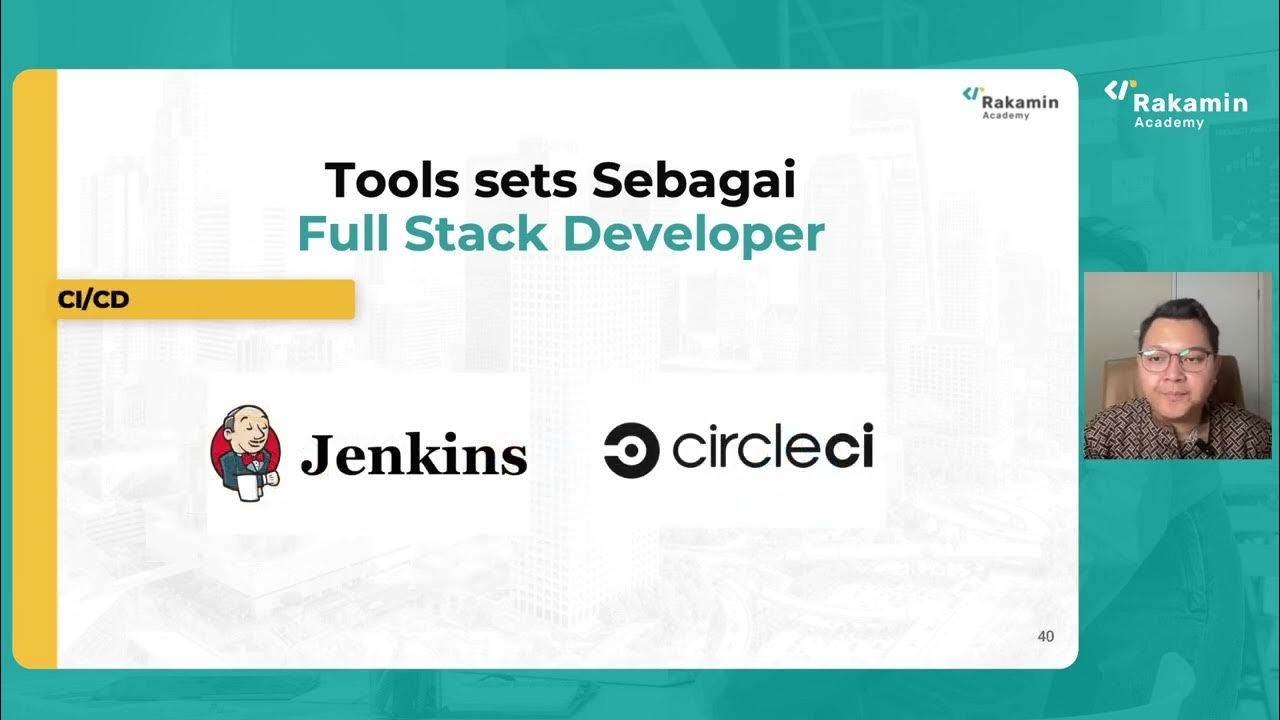How Much HTML, CSS, & JavaScript Is Enough In 2023 | Setting Realistic Expectations
Summary
TLDRThe video script emphasizes the foundational skills required for full stack development, suggesting a structured learning path. It highlights the importance of understanding JavaScript basics, HTML and CSS fundamentals, and the asynchronous nature of JavaScript. The script also underscores the value of learning how to connect a front-end to a backend server and the role of frameworks like React in simplifying DOM manipulation. The speaker advocates for a deep understanding of the underlying technologies before leveraging advanced tools and frameworks.
Takeaways
- 📚 Start with understanding the fundamentals of JavaScript, as it is the scripting language for full stack development.
- 🔍 Spend the first week learning JavaScript basics, including syntax, loops, conditionals, and other essential programming concepts.
- 💻 Follow up with coding exercises and problems to solidify your understanding of JavaScript and get comfortable with its syntax.
- 🌐 Learn the basics of HTML and CSS, focusing on simple tags, structure, and styling without diving too deep into complexity.
- 🎮 Create a simple game using HTML canvas and JavaScript to understand how the two interact and add interactivity to your web projects.
- 🔄 Grasp the asynchronous nature of JavaScript, including promises, async/await, and the single-threaded nature of JS execution.
- 🔗 Understand how to connect your front-end application to a backend server using fetch API and the fundamentals of HTTP requests.
- 🔄 Learn DOM manipulation to comprehend how dynamic websites were built before the advent of modern frameworks like React.
- 🛠 After mastering the basics, move on to frameworks like React and Vue.js, knowing that they simplify the process of writing HTML, CSS, and JavaScript.
- 🔑 Recognize that modern frameworks abstract the underlying simple HTML, CSS, and JavaScript, but understanding these basics is crucial for effective full stack development.
Q & A
What is the recommended starting point for someone beginning full stack development?
-The starting point should be learning JavaScript as a scripting language, focusing on basic syntax, loops, conditionals, and other foundational concepts.
Why is understanding the basics of HTML and CSS important before diving into frameworks like React or Django?
-Understanding the basics of HTML and CSS is crucial because it provides the foundational knowledge of how web content and styling work, which is essential even when using high-level abstractions in modern frameworks.
What are some common pitfalls that beginners face when transitioning from learning React to working with backend servers?
-Beginners often struggle with understanding query parameters and the underlying mechanisms of backend servers, which can be mitigated by first gaining a solid grasp of JavaScript fundamentals and the basics of server communication.
How can one practice JavaScript basics after learning the syntax?
-Practice can be achieved by solving algorithmic problems, doing coding exercises, and working on small projects like creating a basic game using canvas and JavaScript event handling.
What is the role of asynchronous JavaScript in full stack development?
-Asynchronous JavaScript is key to handling tasks that may take a long time, such as server requests, without blocking the main thread. It is important for understanding how to manage non-blocking operations and working with APIs effectively.
What should a full stack developer know about HTML before moving on to frameworks like React or Vue?
-A full stack developer should know basic HTML tags, such as those for text formatting, links, images, and forms. Understanding how to structure content is more important than delving into complex table structures or other less frequently used elements.
How does learning the fundamentals of JavaScript, HTML, and CSS prepare a developer for using modern frameworks?
-Learning the fundamentals allows developers to understand what's happening under the hood when using frameworks. It provides a strong base to grasp how frameworks simplify and abstract complex processes, making it easier to leverage these tools effectively.
What is the significance of DOM manipulation in the context of full stack development?
-DOM manipulation is how dynamic web pages were created before the advent of frameworks like React. Understanding how to manipulate the DOM provides insight into how modern frameworks streamline and simplify this process.
How does the knowledge of basic web technologies like HTML, CSS, and JavaScript benefit a developer using modern tools?
-Having a solid understanding of these basic technologies enables developers to comprehend the underlying processes that modern tools abstract, making it easier to troubleshoot issues, optimize performance, and create more effective web applications.
What is the recommended approach to learning the asynchronous nature of JavaScript?
-The recommended approach is to spend a few hours understanding concepts like promises, async functions, the single-threaded nature of JavaScript, and how the JS engine operates in both browser and Node.js environments.
Why is it important for full stack developers to understand how to communicate with backend APIs?
-Understanding API communication is vital as it allows developers to send and receive data from backend servers, which is essential for creating interactive and dynamic web applications that can update and display content based on user interactions and data retrieval.
Outlines

This section is available to paid users only. Please upgrade to access this part.
Upgrade NowMindmap

This section is available to paid users only. Please upgrade to access this part.
Upgrade NowKeywords

This section is available to paid users only. Please upgrade to access this part.
Upgrade NowHighlights

This section is available to paid users only. Please upgrade to access this part.
Upgrade NowTranscripts

This section is available to paid users only. Please upgrade to access this part.
Upgrade NowBrowse More Related Video
5.0 / 5 (0 votes)





